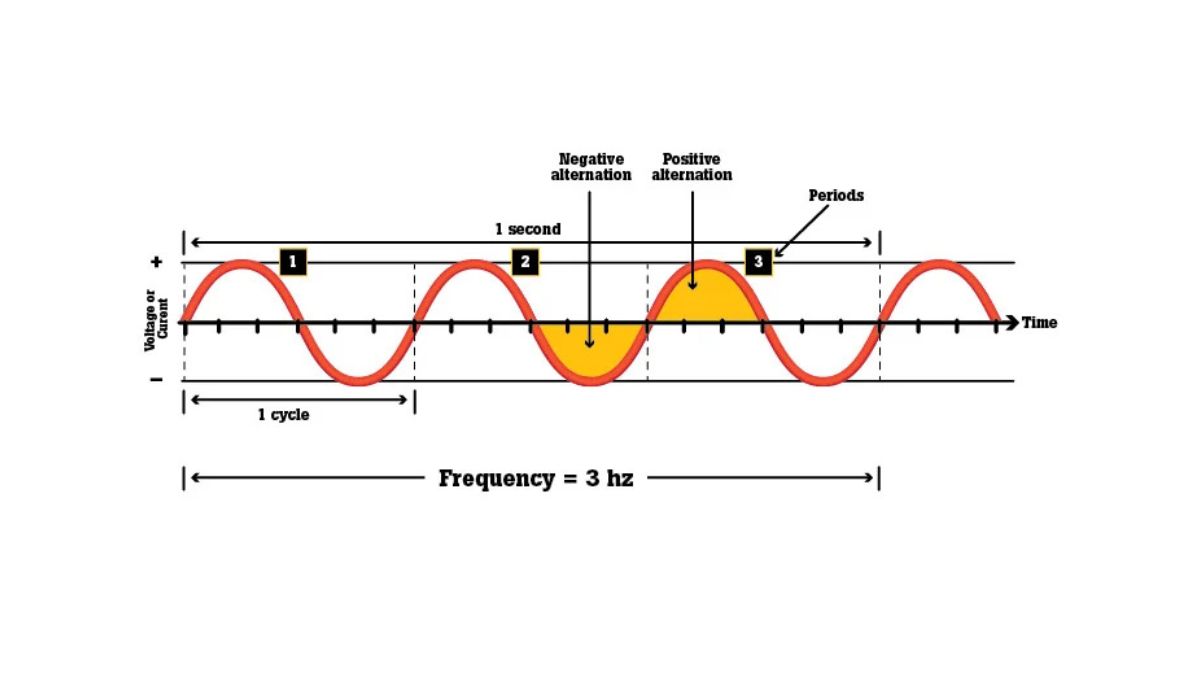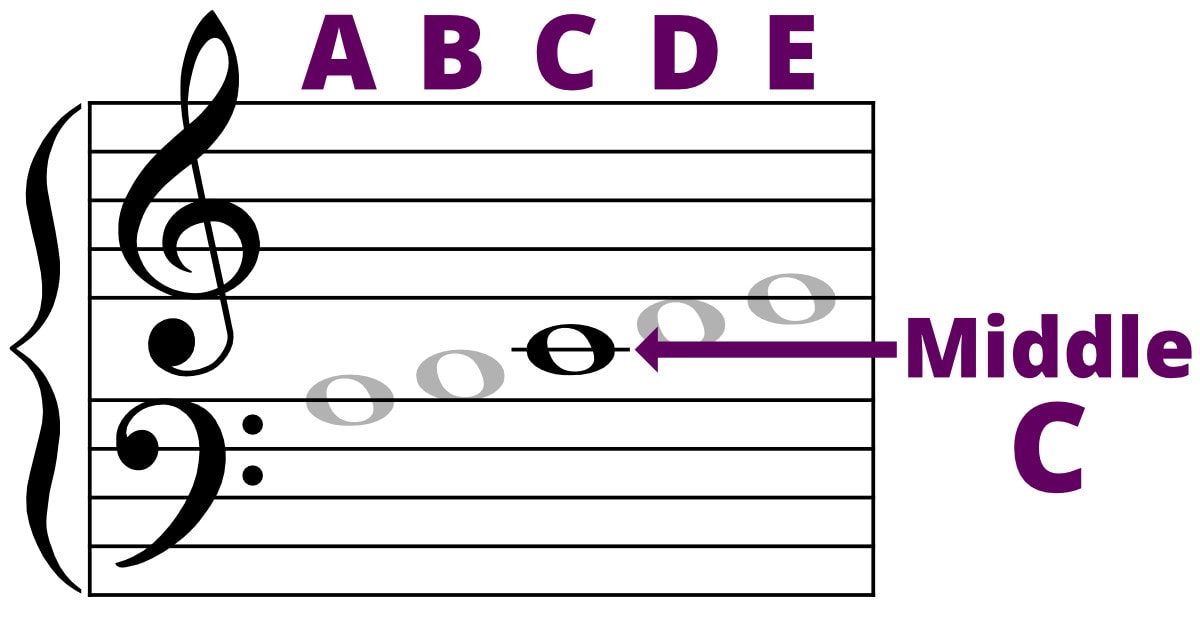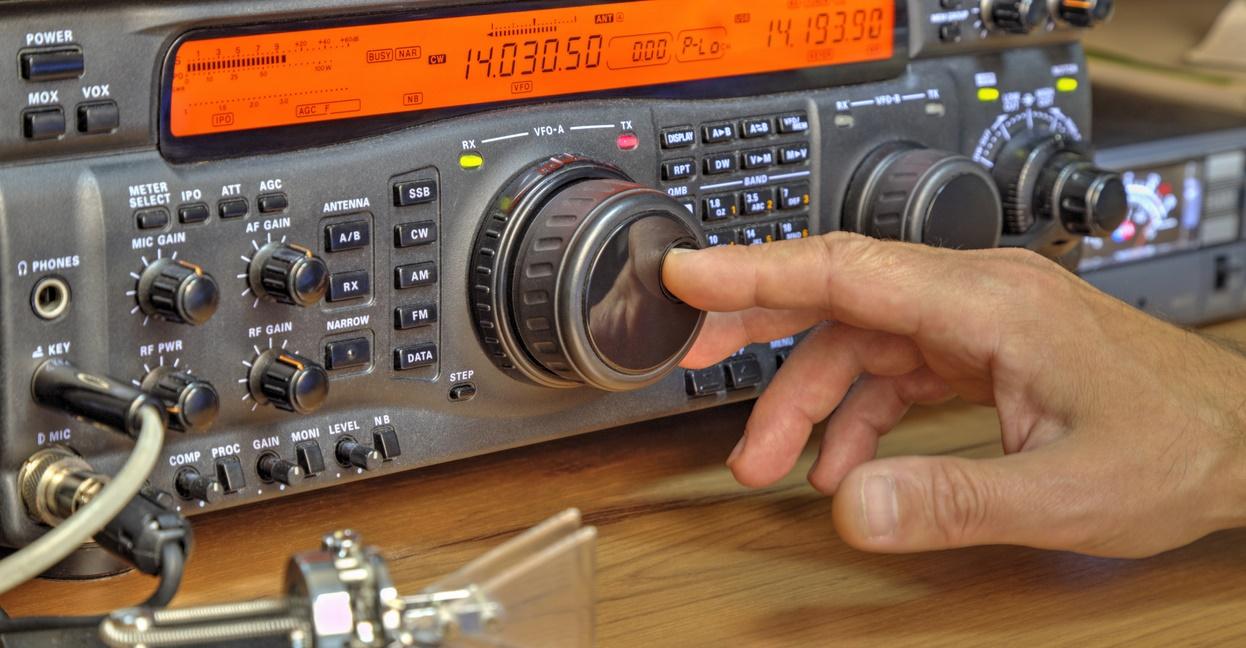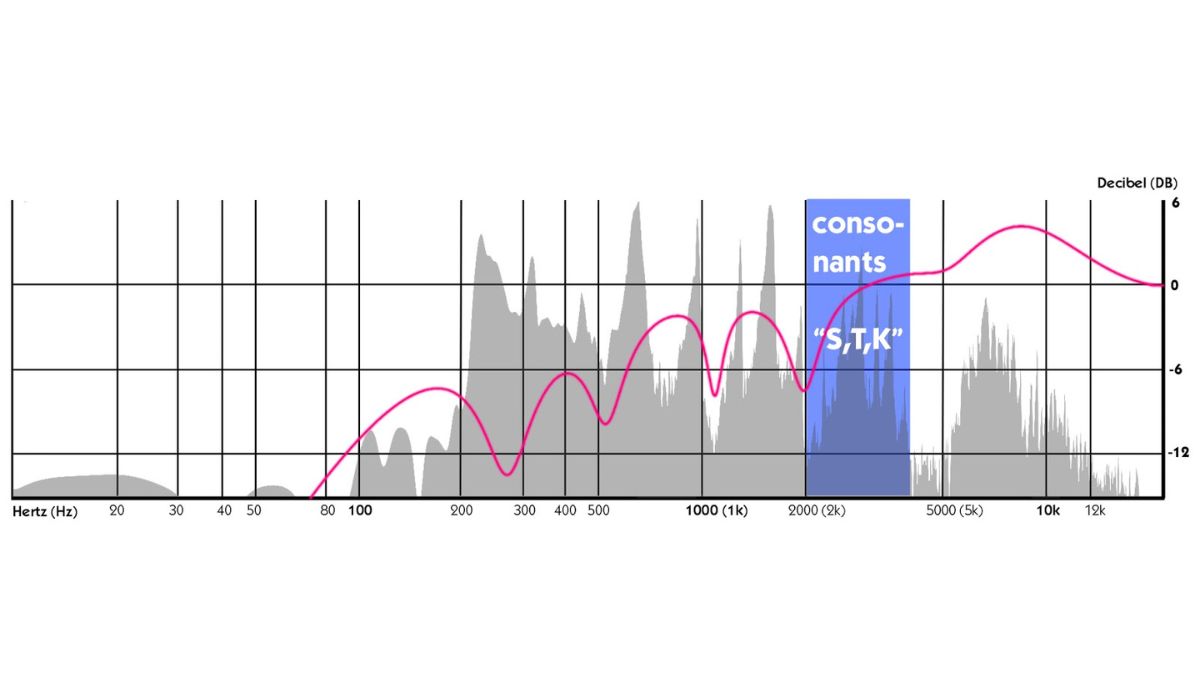Home>Events & Info>Frequency>What Are Hz Frequency


Frequency
What Are Hz Frequency
Published: February 18, 2024
Discover the significance of frequency and its impact on various systems. Learn about the concept of Hz frequency and its applications. Gain insights into the role of frequency in different fields.
(Many of the links in this article redirect to a specific reviewed product. Your purchase of these products through affiliate links helps to generate commission for AudioLover.com, at no extra cost. Learn more)
Table of Contents
Introduction
Welcome to the fascinating world of frequency! Whether you realize it or not, frequency plays a crucial role in our daily lives, influencing everything from the sounds we hear to the technologies we use. In this article, we will delve into the concept of frequency, with a specific focus on hertz (Hz) frequency. By the end of this exploration, you will gain a deeper understanding of what Hz frequency is, its significance, and its pervasive presence in various aspects of our world.
Frequency is a fundamental aspect of nature that governs the behavior of waves, vibrations, and oscillations. It is a concept that transcends multiple disciplines, including physics, engineering, music, and communication. Understanding frequency, particularly in the context of Hz frequency, can provide valuable insights into the functioning of numerous systems and devices that we encounter in our daily lives.
Throughout this article, we will demystify the concept of Hz frequency, exploring its definition, importance, and real-world applications. From the mesmerizing melodies of music to the seamless operation of electronic devices, the influence of Hz frequency is truly omnipresent. So, fasten your seatbelts as we embark on an illuminating journey into the captivating realm of Hz frequency.
Understanding Frequency
Before delving into the specifics of Hz frequency, it’s essential to grasp the broader concept of frequency itself. In the realm of physics and wave theory, frequency refers to the number of occurrences of a repeating event within a specific time frame. This could manifest as the number of wave cycles that pass a given point in one second, the oscillations of a pendulum within a set duration, or the vibrations of a guitar string in a defined period.
Frequency is intrinsically linked to the concept of periodicity, which denotes the regular and predictable nature of a phenomenon. When discussing frequency, it is common to encounter terms such as “cycles per second” or “oscillations per unit time,” which serve as quantitative measures of this recurring behavior. The unit of measurement for frequency is the hertz (Hz), named in honor of the German physicist Heinrich Hertz, a pioneer in the study of electromagnetism.
One of the most familiar manifestations of frequency is in the context of sound. The pitch of a musical note, for instance, is directly related to its frequency, with higher pitches corresponding to higher frequencies and vice versa. In the domain of electromagnetic radiation, frequency determines the color of light we perceive, with different frequencies giving rise to the rich spectrum of hues that adorn our world.
Moreover, frequency extends its influence to diverse fields, including telecommunications, radio waves, and medical diagnostics. In each of these domains, an understanding of frequency is indispensable for optimizing performance, ensuring accuracy, and enabling seamless communication.
As we navigate through the intricacies of frequency, it becomes evident that this fundamental concept underpins a myriad of phenomena and technologies. Now that we have laid the groundwork for comprehending frequency, let’s narrow our focus to the specific realm of hertz frequency and unravel its significance in our daily experiences.
What is Hz Frequency?
At its core, hertz (Hz) frequency represents the number of cycles or oscillations that occur in one second. This unit of measurement is pivotal in quantifying the rate at which a periodic event repeats itself within a given timeframe. In essence, Hz frequency serves as a yardstick for assessing the rapidity or sluggishness of a recurring phenomenon, be it a wave, vibration, or oscillation.
When we encounter the term “hertz” in the context of frequency, it signifies the fundamental unit of measurement for cyclical occurrences. For instance, a frequency of 1 Hz indicates that one cycle or oscillation occurs every second, while a frequency of 100 Hz denotes a much swifter rate of repetition, with 100 cycles transpiring within the span of a single second.
While the concept of Hz frequency finds widespread application in diverse domains, it is particularly prominent in the realms of acoustics and electronics. In the domain of sound, Hz frequency directly influences the pitch of audible tones, with lower frequencies producing deeper sounds and higher frequencies yielding shriller notes. This relationship between frequency and pitch forms the basis for the melodic tapestries that enrich our musical experiences.
Furthermore, in the realm of electronics and signal processing, Hz frequency plays a pivotal role in shaping the performance of devices and systems. From the oscillations of quartz crystals in timekeeping circuits to the transmission of radio waves in communication networks, the precise manipulation of Hz frequency is instrumental in ensuring the seamless operation of myriad technologies.
It is important to note that Hz frequency is not confined to a single domain but permeates various facets of our daily encounters. Whether we are appreciating the harmonious melodies of a symphony, tuning into a radio broadcast, or marveling at the vibrant hues of a digital display, the omnipresence of Hz frequency underscores its significance in shaping our sensory experiences and technological landscapes.
Now that we have unraveled the essence of Hz frequency, let’s delve deeper into its pivotal role and the profound impact it exerts in our daily lives.
Importance of Hz Frequency
The significance of Hz frequency extends far beyond its role as a mere quantitative measure of recurring events. Instead, it serves as a fundamental cornerstone underpinning a multitude of phenomena and technologies that profoundly influence our daily experiences.
One of the paramount domains where Hz frequency holds immense importance is in the realm of acoustics and auditory perception. The relationship between frequency and pitch is pivotal in shaping the timbre and tonal quality of sounds. From the resonant bass notes that reverberate through concert halls to the crystalline treble tones that adorn intricate musical compositions, the manipulation of Hz frequency forms the bedrock of auditory artistry.
Moreover, in the domain of communication and signal processing, Hz frequency plays a pivotal role in facilitating seamless interactions and data transmission. The allocation of specific frequency bands for radio waves, for instance, enables the efficient dissemination of information across vast distances, forming the backbone of modern telecommunications and broadcasting systems.
Furthermore, in the context of visual media and display technologies, Hz frequency assumes a critical role in determining the refresh rate of screens and monitors. A higher refresh rate, denoted in hertz, results in smoother and more fluid visual experiences, enhancing the clarity and responsiveness of digital displays and immersive visual content.
Additionally, the realm of scientific research and medical diagnostics leverages Hz frequency to unravel intricate details about the human body and the natural world. From the precise calibration of imaging equipment to the analysis of brainwave patterns, the manipulation of Hz frequency enables researchers and healthcare professionals to glean invaluable insights and make groundbreaking discoveries.
By recognizing the pervasive influence of Hz frequency across diverse domains, it becomes evident that its significance transcends mere numerical measurements. Instead, it forms the bedrock of our sensory experiences, technological advancements, and scientific endeavors, shaping the very fabric of our interactions with the world around us.
As we continue our exploration of Hz frequency, we will unravel its manifestations in everyday life and the profound impact it exerts on the devices and systems that enrich our daily experiences.
Hz Frequency in Everyday Life
The influence of Hz frequency permeates numerous facets of our daily lives, often in ways that may escape our conscious awareness. From the harmonious melodies that serenade our ears to the seamless operation of electronic devices, the omnipresence of Hz frequency profoundly shapes our sensory experiences and technological encounters.
One of the most palpable manifestations of Hz frequency in everyday life is in the realm of music and auditory perception. When we revel in the melodic compositions of our favorite songs, the interplay of different frequencies gives rise to a rich tapestry of tonal hues and rhythmic patterns. Whether it’s the resonant bass notes that underpin a symphony’s grandeur or the ethereal treble tones that dance through a delicate sonata, the manipulation of Hz frequency forms the bedrock of musical expression.
Furthermore, in the domain of visual media and digital displays, Hz frequency assumes a pivotal role in shaping our visual experiences. The refresh rate of screens and monitors, denoted in hertz, determines the fluidity and responsiveness of visual content. A higher refresh rate, characterized by a greater frequency, results in smoother transitions and enhanced clarity, enriching our interactions with digital imagery and immersive visual narratives.
Moreover, the seamless operation of electronic devices, from smartphones to computers, hinges on the precise manipulation of Hz frequency. The oscillations of quartz crystals in timekeeping circuits, for instance, ensure the accurate measurement of time, underpinning the synchronized orchestration of our daily schedules and activities.
Additionally, the world of telecommunications and broadcasting harnesses the power of Hz frequency to enable seamless communication and data transmission. The allocation of specific frequency bands for radio waves facilitates the dissemination of information across vast distances, forming the backbone of modern communication networks and broadcasting systems.
By recognizing the myriad ways in which Hz frequency intertwines with our daily experiences, we gain a deeper appreciation for its pervasive influence. From the captivating allure of music to the seamless functionality of electronic devices, Hz frequency infuses our lives with a symphony of oscillations and vibrations, shaping the very fabric of our sensory encounters and technological engagements.
As we continue our exploration, we will unravel the intricacies of measuring Hz frequency and its profound implications in the realm of technology and innovation.
Measuring Hz Frequency
Measuring Hz frequency involves quantifying the rate at which a periodic event repeats itself within a specific timeframe. This process is instrumental in assessing the oscillatory or vibrational behavior of phenomena across diverse domains, ranging from acoustics and electronics to telecommunications and scientific research.
One of the most prevalent methods for measuring Hz frequency involves the use of specialized instruments known as frequency counters. These devices are designed to accurately determine the number of cycles or oscillations that occur within a given duration, typically expressed in hertz. By leveraging advanced electronic circuitry and precise timing mechanisms, frequency counters provide a reliable means of quantifying Hz frequency across a broad spectrum of applications.
Furthermore, in the domain of sound and acoustics, the measurement of Hz frequency is pivotal for assessing the pitch and tonal characteristics of audible tones. Devices such as spectrum analyzers and oscilloscopes enable the visualization and analysis of frequency spectra, allowing for the precise determination of Hz frequency in musical compositions, speech patterns, and environmental sounds.
In the realm of electronics and signal processing, the measurement of Hz frequency extends to the calibration and testing of electronic circuits, communication systems, and digital devices. Oscilloscopes, function generators, and frequency synthesizers serve as indispensable tools for manipulating and measuring Hz frequency, ensuring the optimal performance of electronic components and systems.
Moreover, the allocation of specific frequency bands for radio waves and wireless communications necessitates accurate methods for measuring and monitoring Hz frequency. Spectrum analyzers, signal generators, and radio frequency (RF) meters play a pivotal role in characterizing and regulating the allocation of frequency spectra, enabling the seamless transmission of data and information across diverse communication networks.
By employing sophisticated measurement techniques and advanced instrumentation, engineers, scientists, and technicians can gain invaluable insights into the behavior of waves, oscillations, and vibrations, unraveling the intricate nuances of Hz frequency across a myriad of applications.
As we continue our exploration, we will delve into the profound implications of Hz frequency in the realm of technology, innovation, and scientific discovery.
Hz Frequency in Technology
The pervasive influence of Hz frequency extends deeply into the realm of technology, shaping the performance and functionality of a diverse array of devices and systems. From the precision timing of electronic circuits to the seamless transmission of data in communication networks, the manipulation and regulation of Hz frequency are instrumental in driving technological innovations and advancements.
One of the paramount domains where Hz frequency exerts its influence is in the realm of digital signal processing and telecommunications. The allocation and modulation of specific frequency bands for radio waves and wireless communication networks hinge on the precise manipulation of Hz frequency. By modulating signals at different frequencies, information can be efficiently encoded, transmitted, and decoded, forming the backbone of modern communication systems.
Moreover, the realm of computing and electronics relies heavily on the precise calibration and synchronization of Hz frequency. The oscillations of quartz crystals in electronic circuits, for instance, serve as the heartbeat of digital devices, ensuring accurate timekeeping and synchronization. The manipulation of Hz frequency in microprocessors and timing circuits underpins the seamless operation of computers, smartphones, and a myriad of digital devices that permeate our daily lives.
Furthermore, the visual display technologies that adorn our digital landscape are intricately intertwined with Hz frequency. The refresh rate of screens and monitors, denoted in hertz, determines the fluidity and responsiveness of visual content. Higher refresh rates, characterized by greater frequencies, result in smoother transitions and enhanced clarity, enhancing the visual experiences offered by digital displays and immersive multimedia content.
Additionally, the realm of scientific research and medical diagnostics leverages Hz frequency to unravel intricate details about the natural world and the human body. From the precise calibration of imaging equipment to the analysis of brainwave patterns, the manipulation of Hz frequency enables researchers and healthcare professionals to glean invaluable insights and make groundbreaking discoveries.
By recognizing the profound implications of Hz frequency in technology, we gain a deeper appreciation for its role in shaping the devices, systems, and innovations that underpin our modern world. As we continue our exploration, we will unravel the intricate interplay between Hz frequency and the ever-evolving landscape of technological advancements and scientific endeavors.
Conclusion
Our journey into the captivating realm of Hz frequency has unveiled its profound significance and pervasive influence across diverse domains. From the mesmerizing melodies of music to the seamless operation of electronic devices, Hz frequency serves as a fundamental cornerstone that shapes our sensory experiences and technological encounters.
By understanding the essence of Hz frequency, we gain valuable insights into the behavior of waves, oscillations, and vibrations that underpin numerous phenomena and technologies. Whether we are immersed in the harmonious symphonies of sound or navigating the immersive landscapes of visual media, the omnipresence of Hz frequency underscores its pivotal role in enriching our daily lives.
Moreover, the precise measurement and manipulation of Hz frequency are instrumental in driving technological innovations, scientific discoveries, and advancements in communication and signal processing. From the modulation of radio waves to the synchronization of electronic circuits, Hz frequency forms the bedrock of myriad devices and systems that define our modern world.
As we reflect on the multifaceted manifestations of Hz frequency, it becomes evident that its influence transcends mere numerical measurements. Instead, it weaves a symphony of oscillations and vibrations that resonate through our sensory encounters and technological engagements, shaping the very fabric of our interactions with the world around us.
In essence, Hz frequency stands as a testament to the intricate interplay between science, technology, and human experiences, underscoring its role as a unifying force that bridges diverse disciplines and enriches our understanding of the natural world.
As we continue to navigate the ever-evolving landscapes of innovation and discovery, let us carry with us a profound appreciation for the omnipresent influence of Hz frequency, recognizing its role as a silent orchestrator that harmonizes the rhythms of our world.











